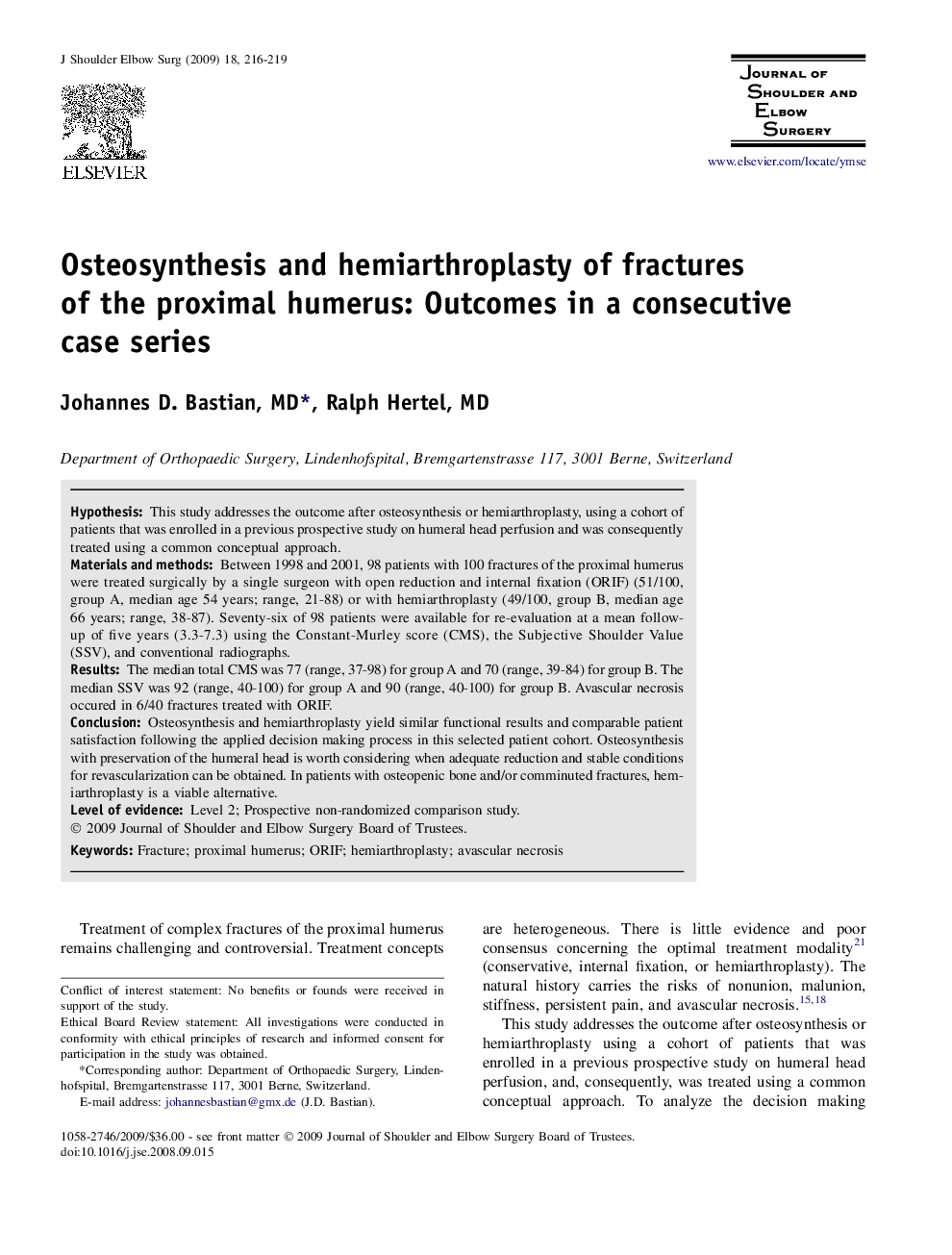| Article ID | Journal | Published Year | Pages | File Type |
|---|---|---|---|---|
| 4075490 | Journal of Shoulder and Elbow Surgery | 2009 | 4 Pages |
HypothesisThis study addresses the outcome after osteosynthesis or hemiarthroplasty, using a cohort of patients that was enrolled in a previous prospective study on humeral head perfusion and was consequently treated using a common conceptual approach.Materials and methodsBetween 1998 and 2001, 98 patients with 100 fractures of the proximal humerus were treated surgically by a single surgeon with open reduction and internal fixation (ORIF) (51/100, group A, median age 54 years; range, 21-88) or with hemiarthroplasty (49/100, group B, median age 66 years; range, 38-87). Seventy-six of 98 patients were available for re-evaluation at a mean follow-up of five years (3.3-7.3) using the Constant-Murley score (CMS), the Subjective Shoulder Value (SSV), and conventional radiographs.ResultsThe median total CMS was 77 (range, 37-98) for group A and 70 (range, 39-84) for group B. The median SSV was 92 (range, 40-100) for group A and 90 (range, 40-100) for group B. Avascular necrosis occured in 6/40 fractures treated with ORIF.ConclusionOsteosynthesis and hemiarthroplasty yield similar functional results and comparable patient satisfaction following the applied decision making process in this selected patient cohort. Osteosynthesis with preservation of the humeral head is worth considering when adequate reduction and stable conditions for revascularization can be obtained. In patients with osteopenic bone and/or comminuted fractures, hemiarthroplasty is a viable alternative.Level of evidenceLevel 2; Prospective non-randomized comparison study.
